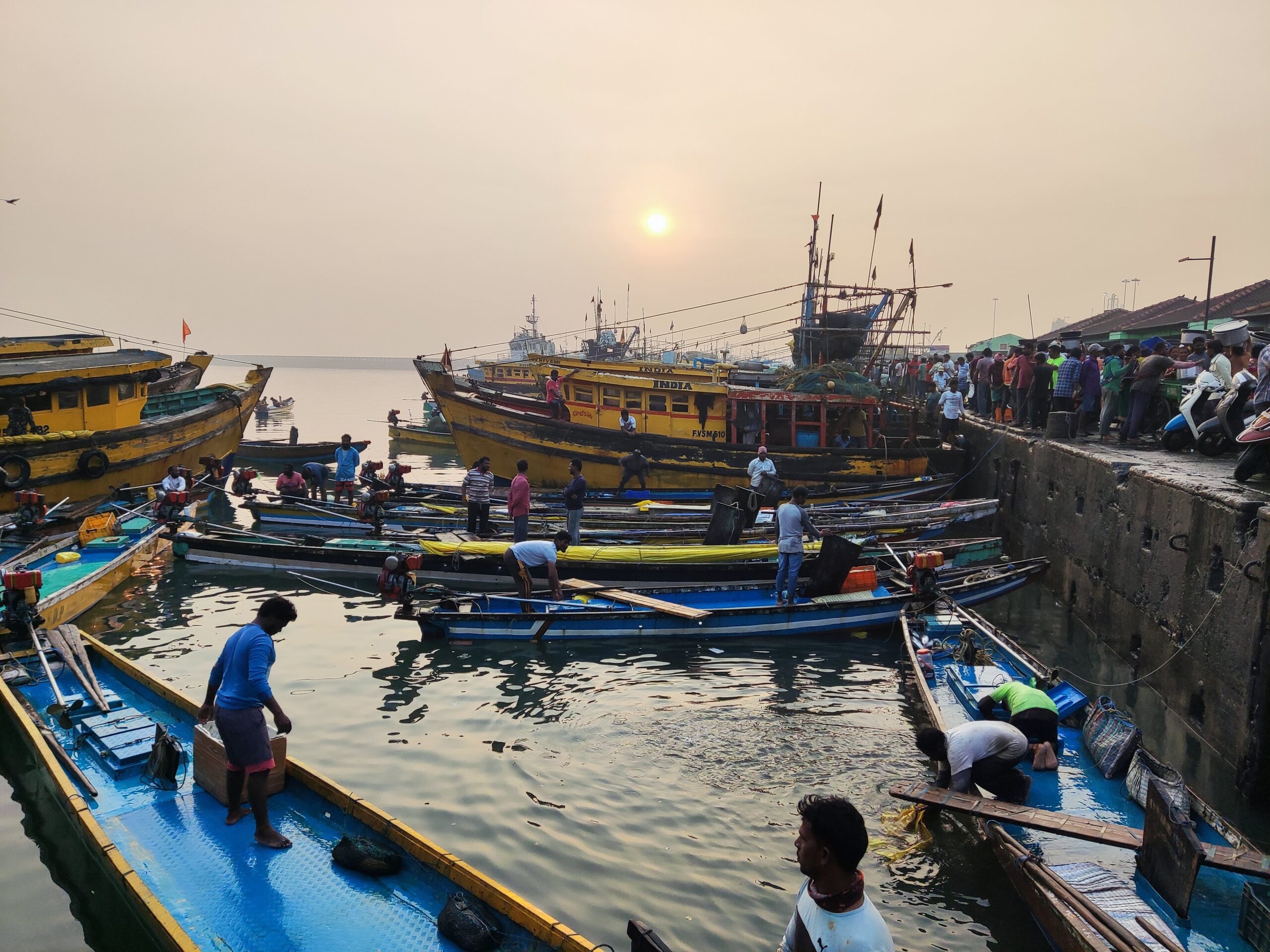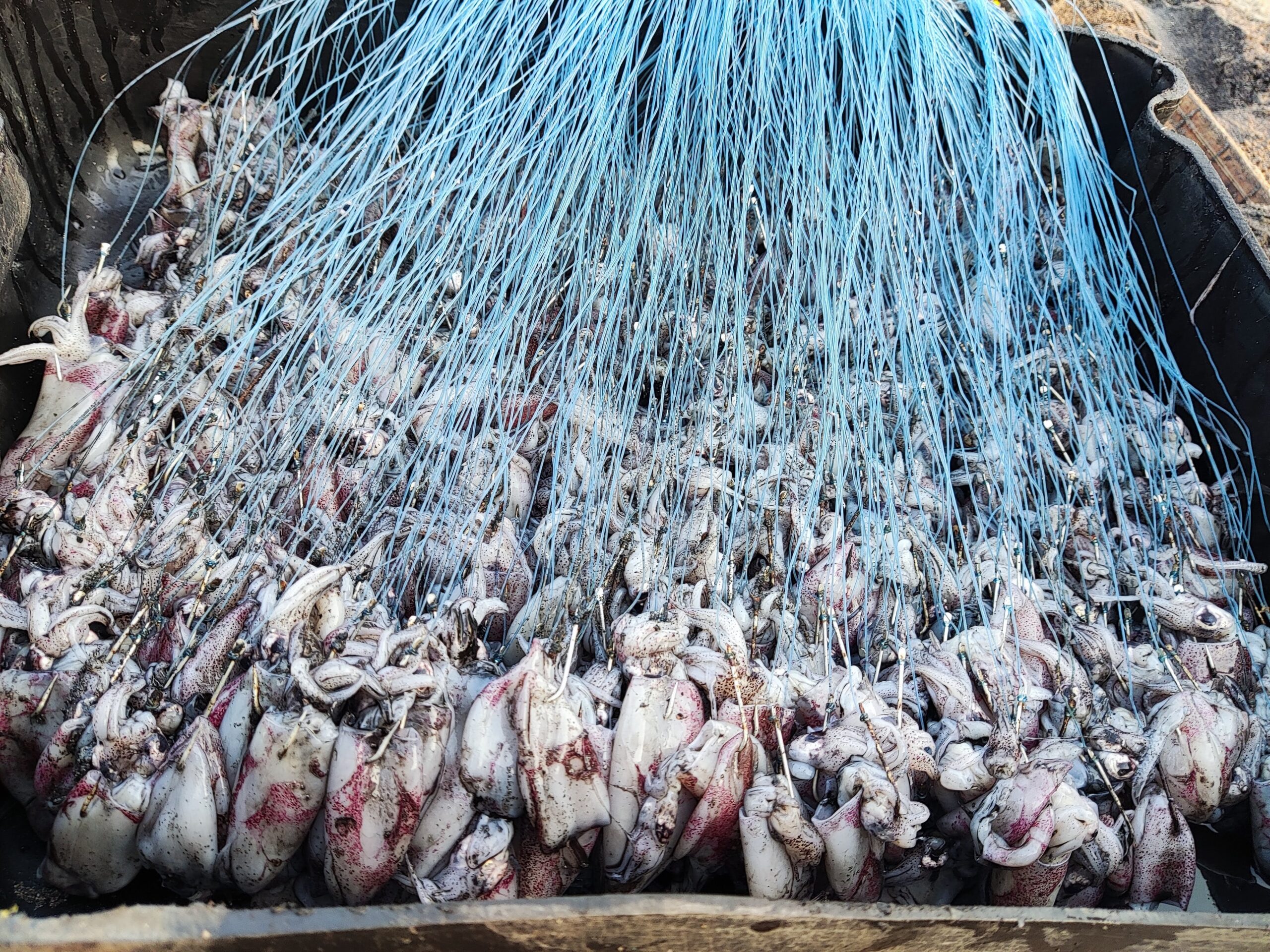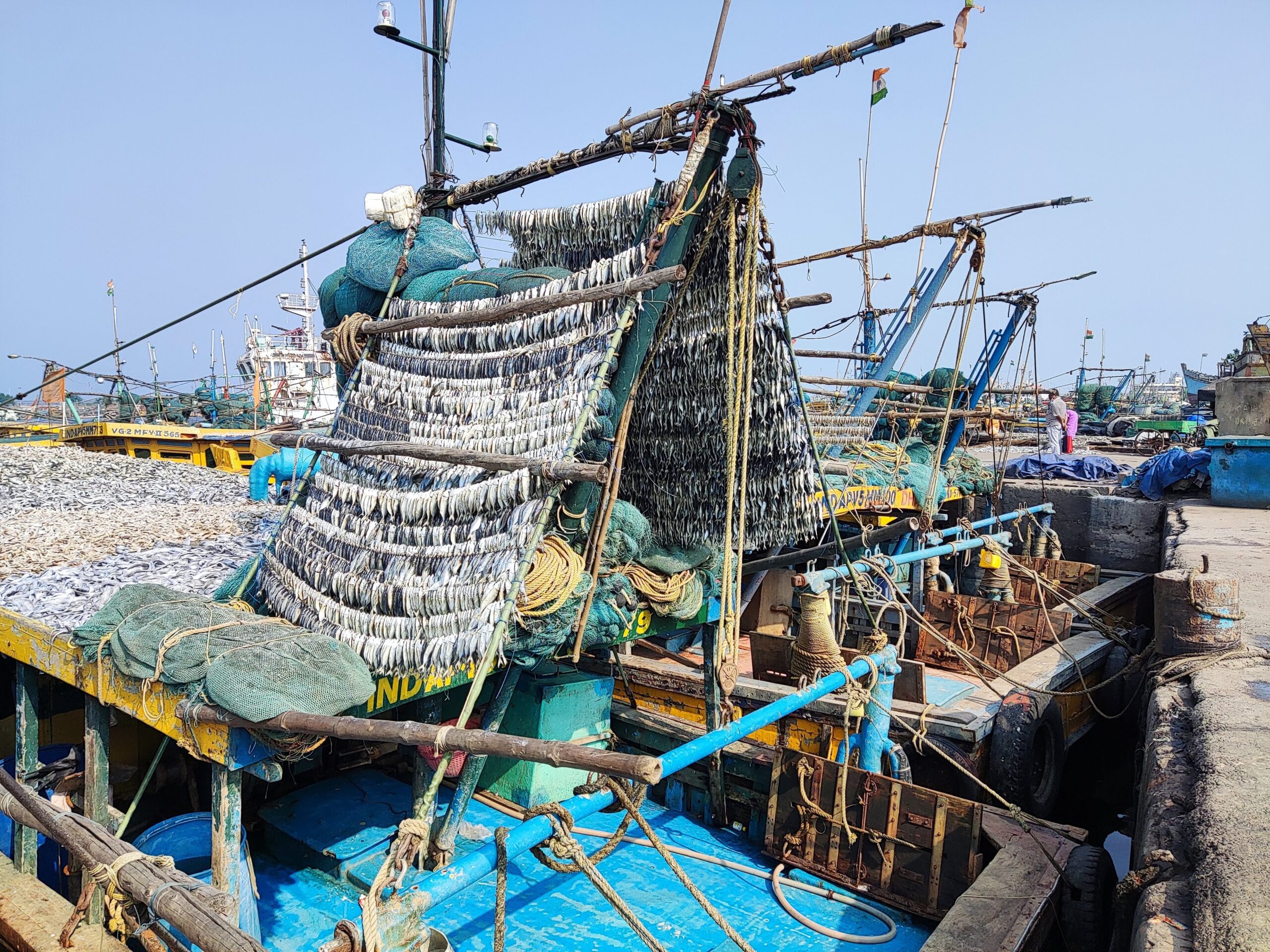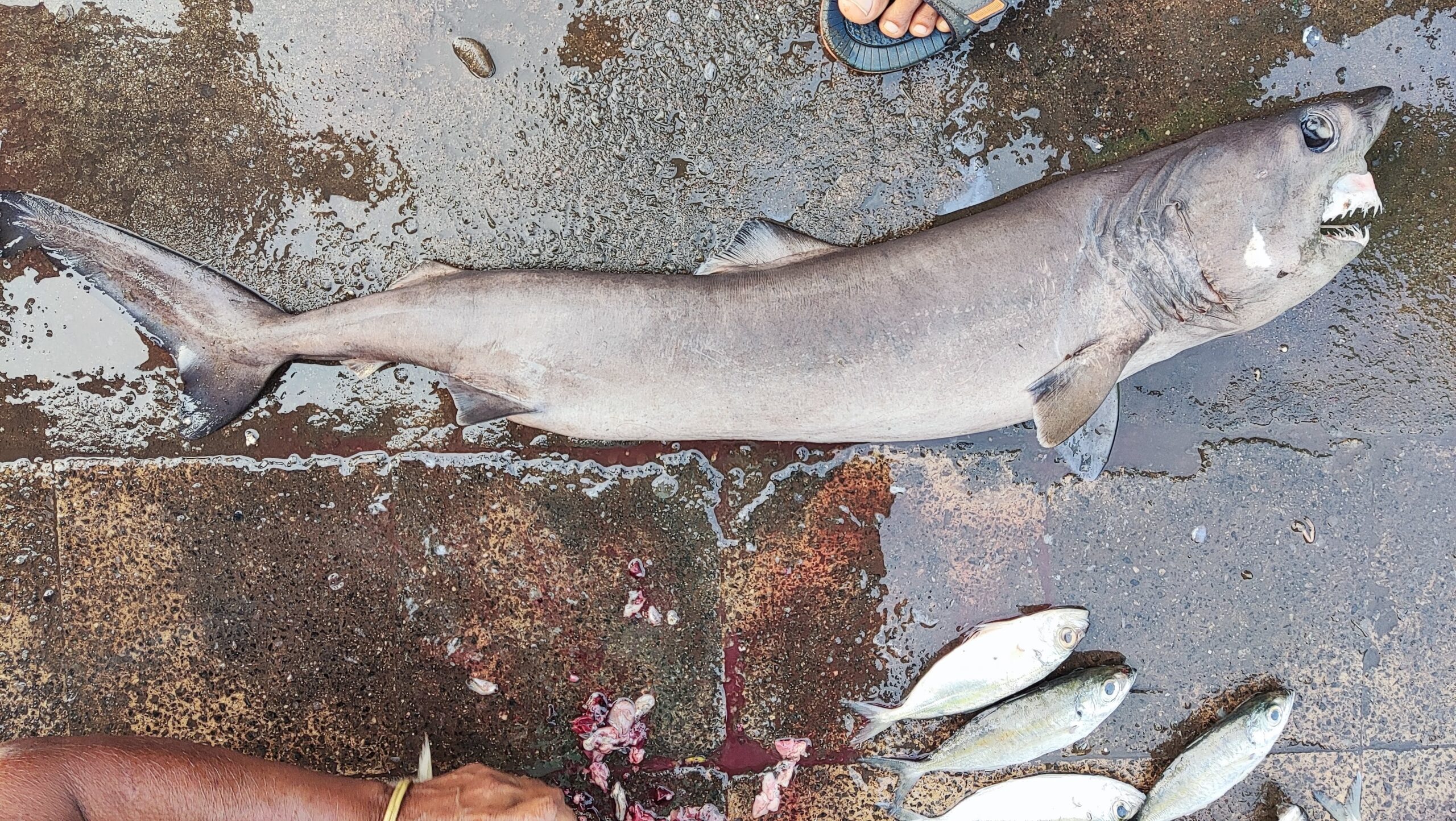The many facets of fisheries in Visakhapatnam
The east coast of India is very different from its west coast. The most striking feature of all being the closeness of the continental slope to the coastline, which may be as low as 20 km at the narrowest. This allows a unique pool of animals to stay very close to the coastline when compared to the west where the continental shelf, on average, is at least a 100km away. This also exposes species that are otherwise found far in the deep to the stress of intense fisheries operating nearshore. The fishing port of Vishakhapatnam in the central east coast is one of the largest in the country, and a visit there can expose one to the breadth of marine diversity occupying India’s oceans. These animals are caught and carried by either small boats of equally diverse shapes and structures plying close to the city of Visakhapatnam, or larger ones that constantly travel up and down the entire 400km east coastline.

Small boats offer little protection from the harsh sea, but local fishers have the skill to navigate several kilometres into the sea to catch large fish. Photo © Imran Samad
Fishing is a costly affair. Making profit from the ever declining and increasingly unpredictable fish-catch is challenging, and local fishers have developed unique ways to adapt. Every small boat in the area, for example, carries a foldable sail to travel with the wind and save fuel costs. Incredibly, some of these boats that barely have space for two people and some storage, travel up to 80 km away from the coast using sails and return on the very same day. This is also advantageous during the summer season when the use of ‘motorised’ fishing vessels is banned by the state government.

Small squids are used as baits for hook and lines that may be as long as five kilometres. Photo © Imran Samad
Larger boats on the other hand are not designed to harness the wind. They operate using trawl nets to catch shrimp and other high-demand species. Trawl nets are usually dragged along the seabed and catch several species that may not be of high commercial value. Instead of discarding such fish into the sea, these boats carefully place them on the roof and hang them on structures on the vessel. Upon their return from long voyages, they generate additional profit from the dried fish, which usually sells for a greater price.

Trawl boats are easily seen from a distance as they enter the fishing harbour from the light reflecting from dried fish scales. Photo © Imran Samad
While several endangered species are seen caught in fisheries at Visakhapatnam, we have little idea of where they are being caught from. Are there specific areas where all species are caught or do species-catches vary by location and seasons? By answering such questions my project hopes to be able to work with the local community to reduce the catch of non-target species and help conserve their future.

Deep dwelling species like the crocodile shark are often seen in the fishing port of Visakhapatnam. Photo © Imran Samad
